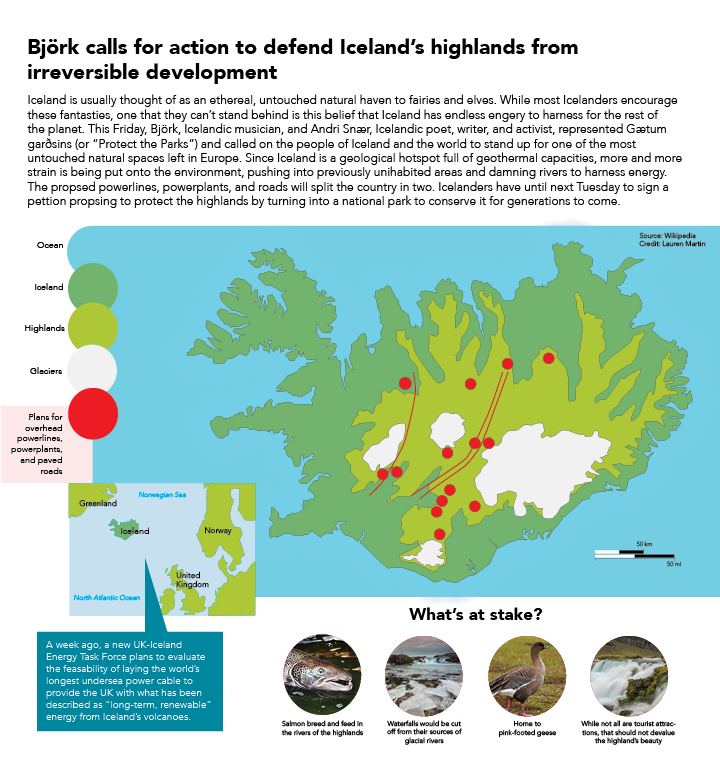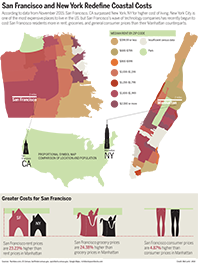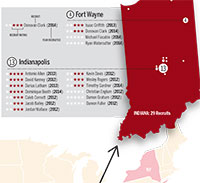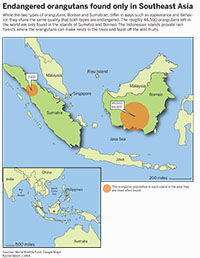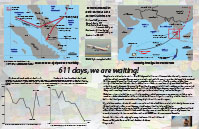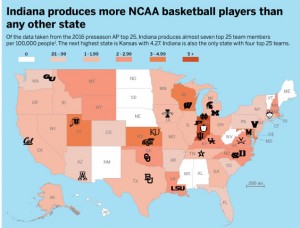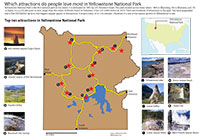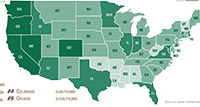For this graphic, I originally brainstormed about geographic locations that were pertained interest to me lately. First, I thought about my recent focus on Haiti and tried to come up with an image that would convey timely information. Nothing came to mind. So instead I progressed to thinking about Iceland, since my travels there this summer made me aware how volatile their environment is with its location poised between the two continental rifts. I looked up Iceland environment on Google News and learned about the press conference had just occurred for the article I was reading. I looked up this grassroots organizational efforts to communicate this timeframe for Icelanders to sign a petition against the construction of power lines cutting straight through the heart of this island country. Instead, Bjork and Icelandic poet, Andri Snær,proposed that a better use of this untouched wilderness than pumping the land of its productivity like every other worn out piece of land would be to preserve this area for future generations as a national park.
To communicate a visual that expressed the detrimental environmental impact of this project, I used a detailed map for reference of the Icelandic Highlands to create the base Iceland vs highlands map. I then overlaid the map I found through Gætum garðsins (or “Protect the Parks”) Facebook page onto my map. I combined the two because the map that Protect the Parks used was less detailed, and seemed to have been thrown together more quickly in means of trying to just get the information out to the public. Since I had a more time, I was able to accurately highlight the highlands in real geographic perspective. It was pretty simple to scale the Protect the Parks map outline with the outline of Iceland. Next, I traced the power lines and potential power plant construction sites onto my combined map. I had a couple of routes I could have taken with this, because I found several different maps that communicated general aerial perspectives of where development would occur on the main Protect the Parks website. However, both gave me conflicting data points for locations of proposed projects. I decided to stick with the one with the power lines and roads shown. The other one was close to accurate, but just off on each point enough to make me believe that someone with less mapping experience put together these maps. While listening to the press conference, the topic of hiring professional cartographers was discussed so I assume as time goes on, more accurate maps will be available.
I think that my map would be more useful in an article to an audience outside of Iceland. They would know where their country is in relation to others. Also, native Icelanders would be aware of where there highlands are I’d assume since its such a small country, and the population is very much centered around main city hubs. I wish I would have included city names, or at the very least the capital, Reykjavik. I don’t know how useful it would be to list other major cities for an international audience. The capital, for sure. I forgot to right the label on the city. Another aspect to communicate more information would have been to highlight cities, and use circles to show the ratio of people living in each vicinity. I would estimate that this would show the low population of the highlands. This would support the fact that this development really is encroaching on untouched land, wild nature.
I never got a response from the administrator of the website to use their photos, so I updated with creative commons photos for the “What’s at stake?” side panel. I also edited this section again to repeat the circle pattern I used on the left of map as a key. With colors, I tried to create a glow around the island in the main map. Printed it came out well, if not a little strong, but for some reason it’s still not appearing in the .ai file or any on screen version of the file.
I have struggled with keeping my stories really timely/relevant, so I was proud that I found something so pressing and important now to understand before decisions are made. Even the little pull out I have from the inset is timely, within a few weeks, of the UK making a deal to create a pipeline to siphon energy from the volcanoes’ energy. The only thing I mainly wish went differently during research was that I found more data references because I mainly referenced other press releases, articles, and the young website created quickly.

